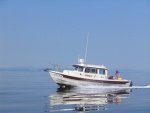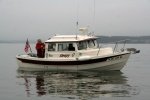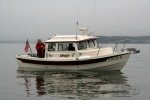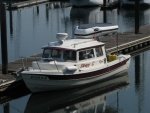Yellowstone's narritative about his boat and slip coming adrift in the middle of the night brought to mind, that I have never posted photos of the personal ditch bag I keep with me at the helm, in the dinghy etc.
Content includes ersonal locator beacon, hand held VHF radio, GPS, ACR strobe flash light (all using AA batteries) a dozen AA batteries in a plastic bag, hand bearing compass, whistle, self launching flares, signal mirror, sea dye, 1/8" cord, cigarette lighter, Vinly sheeting (bright orange, distress flag), Mylar space blanket, 30" sq flour sack cloth (makes two triangular bandages if necessary), small first aid kit, Gerber multi tool, small Vise Grips, small crescent Wrench, spare shear pins for the dinghy motor, pencil, paper.
ersonal locator beacon, hand held VHF radio, GPS, ACR strobe flash light (all using AA batteries) a dozen AA batteries in a plastic bag, hand bearing compass, whistle, self launching flares, signal mirror, sea dye, 1/8" cord, cigarette lighter, Vinly sheeting (bright orange, distress flag), Mylar space blanket, 30" sq flour sack cloth (makes two triangular bandages if necessary), small first aid kit, Gerber multi tool, small Vise Grips, small crescent Wrench, spare shear pins for the dinghy motor, pencil, paper.
There is room for a cell phone, and small ham radio (2m 440, 6 meter), rescue tape and vinly tape etc if you wish.
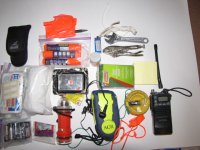
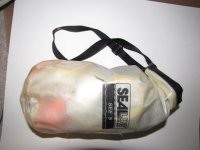
This bag is about 10" and 6" x 6" on the sides. The weight is about 5 lbs, and there is a shoulder strap. It can be kept at your side anywhere you go, and has some of the essentials for survival. You might want to add items or improve on what is included.
Content includes
There is room for a cell phone, and small ham radio (2m 440, 6 meter), rescue tape and vinly tape etc if you wish.


This bag is about 10" and 6" x 6" on the sides. The weight is about 5 lbs, and there is a shoulder strap. It can be kept at your side anywhere you go, and has some of the essentials for survival. You might want to add items or improve on what is included.

